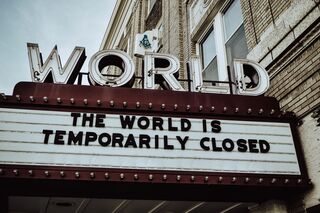Politics
Why Did the Harris-Biden Ticket Win?
Three social science reasons why I was wrong about half the American electorate.
Posted November 7, 2020 Reviewed by Ekua Hagan
Division in this American electorate is clear, evidenced by an obsession with fake news, alternative facts, and contentious social media discourse. Republican perspectives, at least the Trump version of them, were powerfully represented in the 2020 election results, portions of the 2020 results on which I was correct in forecasting a possible Trump victory. Frankly, the strong Trump support turnout and emerging exit polling data suggest that the politics of conservative economics and white identity will remain as we transition to the Biden-Harris era. Republicans also turned out in record numbers. A simple fact as this reflecting a deep rift in social norms should not be ignored as politics, public polling, and social science move forward.

Now to the more pressing point at hand. Kamala Harris, as the VP on the Biden-Harris ticket, is the first mixed-race female that will occupy the White House in such a role. Groundbreaking indeed. Over the past few weeks, I have also speculated that the liberal turnout may not be as strong as hoped or expected. Learning from one’s miscalculations instead of being hyper-focused on winning and being right is important for anyone, even me. Of the various social science-informed projections I considered, it appears I most underestimated three factors: (1) regional influences, (2) the politics of liberal social movements, and (3) the pandemic’s impact.
1. Microlevel Influences.
What of the role of regional influences? As I made prognostications, I relied heavily on peer-reviewed and other social science articles, primarily based on national samples, which clearly missed the mark when considering razor-thin margins in places like Georgia, Arizona, and Wisconsin. Stacey Abrams’ efforts in Georgia, the politics of Indigenous American voting and the aftermath of Trump’s rhetoric toward John McCain in Arizona, and many other examples, can be highlighted to recognize the importance of county- and state-level influences.

Research on American identity politics, for example, demonstrated the negative impacts on voting intentions, among other outcomes, when minority groups such as Native Americans or Black Americans are denied the label of being “American.” It appears possible that the anti-minority social norms created by the “Trump Effect” also had a backlash in that Indigenous Americans in Arizona and Black Americans across many urban regions turned out in droves as a direct response to Trump’s bigotry. Going a step further, in the wake of Obama’s election, a political scientist at UNC-Chapel Hill demonstrated that otherwise disengaged Black American voters can be mobilized through the power of regional influence and contact, resulting in an increased voter turnout among a key regional demographic. Here, the influence of major players like Stacy Abrams may in the end be the driving force that promoted liberal voter turnout through contact and motivational efforts.
2. The Power of Social Movements.
A variety of interwoven social movements, such as Black Lives Matter (BLM), calls to “Defund the Police” and “Me Too” appear to have had a tremendous effect on liberal voter turnout. Nicely illustrating this recent phenomenon, a team of advertising and communications scientists highlight well the frequent and creative political messaging emanating from such social movements.

Despite widespread Trump campaigning against these movements, evidence existed to surmise they may be effective for the left. In the wake of the 2016 election, an interdisciplinary team of social scientists showed that civil rights engagement such as BLM impacted voter behavior, finding robust effects yielding positive liberal voting patterns. With even greater fervor and magnitude of consequence, racial and civil rights social movements were clearly important in the 2020 liberal turnout in part underscored by anti-Trump sentiment.
3. Anthony Fauci.
Science seems to matter in the COVID-19 era (thankfully), perhaps best illustrated by the integrity and consistency of Dr. Anthony Fauci. What made the influence of COVID-19 unclear was the role of the pandemic as either a desire to listen to science as a reason for voting or a practical barrier to voting due to death, infection, and economic constraints for many vulnerable U.S. citizens. Representing the enigma well, one study projected a decline in voter turnout due to what they termed the pandemic as a “mass causality event” causing decreases in voter turnout in key swing states.

Only the best and complete picture of the data should be considered, however. Notably illustrating this point is a well-designed and timely study showing a widening gap toward attitudes about mail-in voting by political party in which Democrats were much more favorable. Glaringly, this pattern extended to the ultimate 2020 election turnout.
In all, polling data should be just one tool. Blind faith in polling data among “likely” voters is fraught with limitations, as we learned well after the 2016 election. Such concerns were the reason I argued for the broader social science considerations, among other disciplines such as history, in fully forecasting possible 2020 outcomes. I weighted too heavily Trump’s strong influences and discounted his negative ones; accounting for both political sides of the issue is necessary, however. Perhaps public polling, public health, and other community-engaged research scientists, and experts in history and social sciences can come together to move this field forward in these ways as we head toward 2022.
The author would like to acknowledge expert consultation in coming to a complete interdisciplinary cross-party reading of the social science of the 2020 U.S. election.




